Severed feet keep floating up in Washington State… and here’s why.

Since August 20th, 2007, at least 21 tennis shoes containing human feet have washed up on the shores of the Salish Sea in Washington State. For years detectives undertook the arduous tasks of identifying the ‘owners’ of these severed feet, and to explain why they keep floating up around the Puget Sound.
A 12-year-old girl on Jedidiah Island discovered the first human foot reported on August 20th, 2007. The shoe, an Adidas size 12, still covered the foot inside.
Jedidiah Island’s caretaker told the local news,
“there were five different shoes on the beach and for some reason she picked up that one, untied the laces, turned the sock inside out and around the foot.”
6 days later, a couple out hiking on nearby Gabriola Island came upon a second shoe, also containing a severed foot. This was a male, 12-inch, Reebok shoe that was presumed to have been dragged ashore by animals.
Coroner Rose Stanton said about both feet found,
“Both feet were decomposing, but still had flesh on them.”
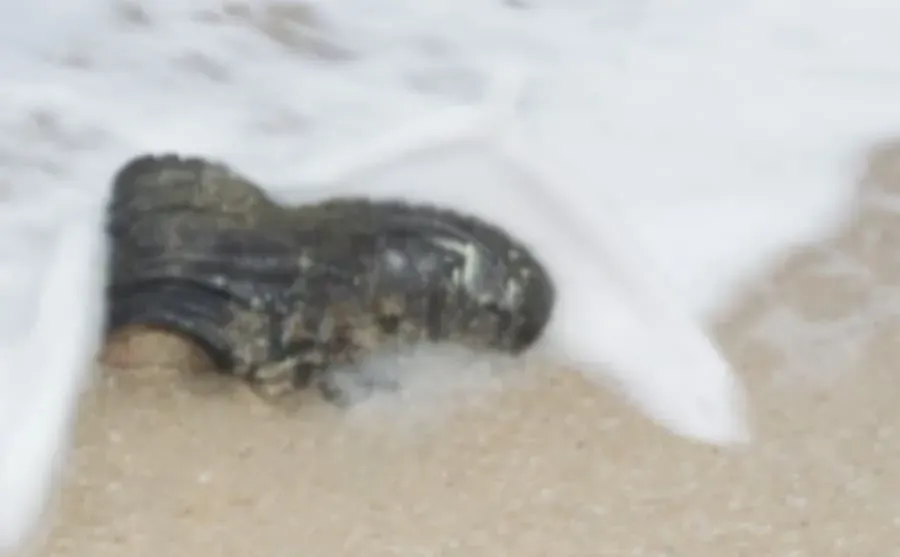
Cpl. Garry Cox, who polices the neighboring islands, said that these finds were “quite suspicious” and spotting one foot is “like a million to one odds, but to find two is crazy.”
The original belief was that both feet belonged to accident victims or missing boaters. It was merely when the press covered the case that theories of foul play entered the discussions. Rumors even began spreading that local morgue employees were stealing feet as a joke, or even that local drug gangs were trying to send a message to each other.
However, the true identity of the feet turned out to be less nefarious.
Talib’s Feet
The 3rd and 4th foot belonged to the same person, a teenager named Talib, who committed suicide on New Year’s Day in 2004. Talib told his family that he was going to the local temple to worship, but instead drove his car to the Alex Fraser Bridge, where he jumped to his death.
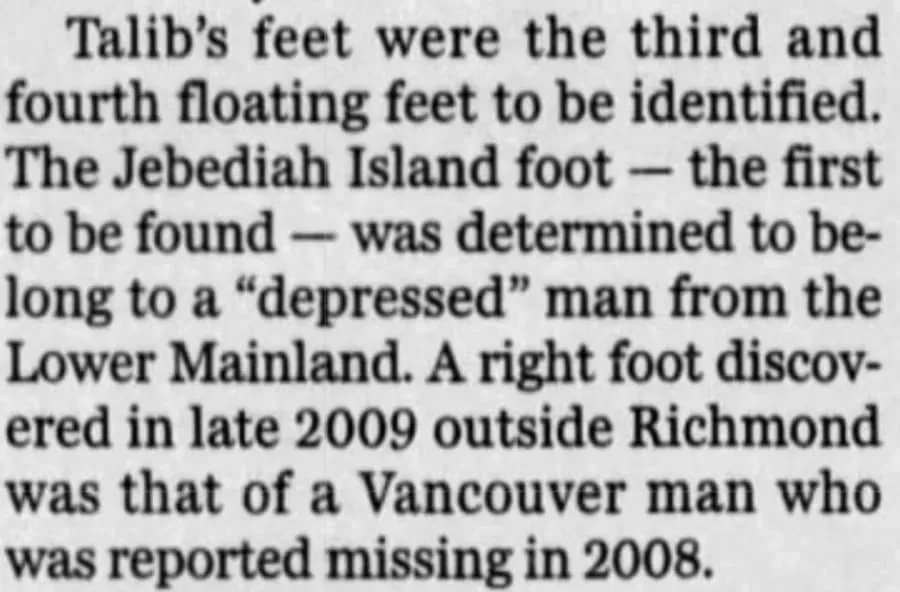
Talib was suffering from depression and took his own life. The National Post reported, “Talib’s fall takes three seconds. Striking icy water at more than 117 kilometers an hour, he might as well be hitting concrete.”
Unknown to searchers, Talib’s body remained submerged for four years before his feet floated ashore.
Talib’s story is like many of the others that had their shoes wash ashore.
Stepping Up The Investigation
Identification of these washed up feet is harder than one may initially believe. DNA is not a practical option, so detectives have to connect attributes of the shoe (male or female and size) to missing persons reports. Detectives also use coastal currents in hopes of pinpoint a starting point for the bodies.
Law enforcement officials working to identify the owners of the feet have created an entire database of unidentified remains around the Puget Sound area.
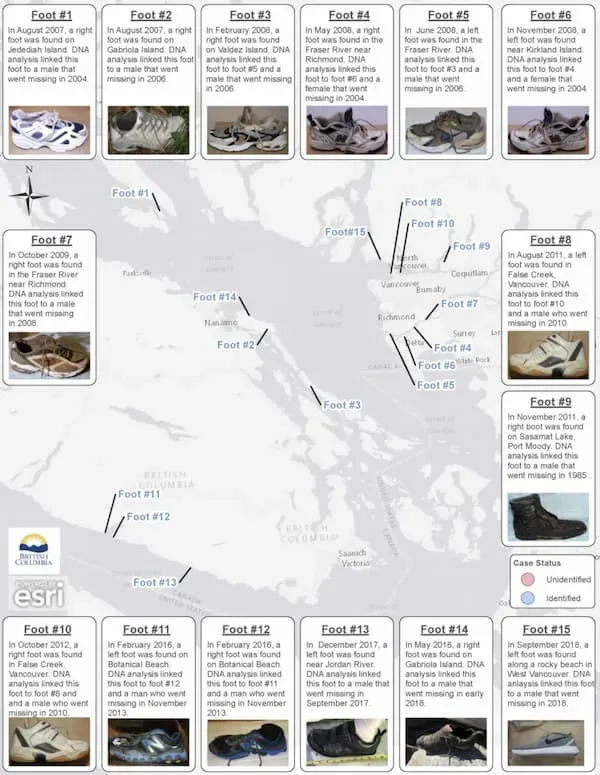
Ultimately, all the feet identified so far have included missing boaters and bridge jumpers (suicide victims).
Why The Shoes Float?
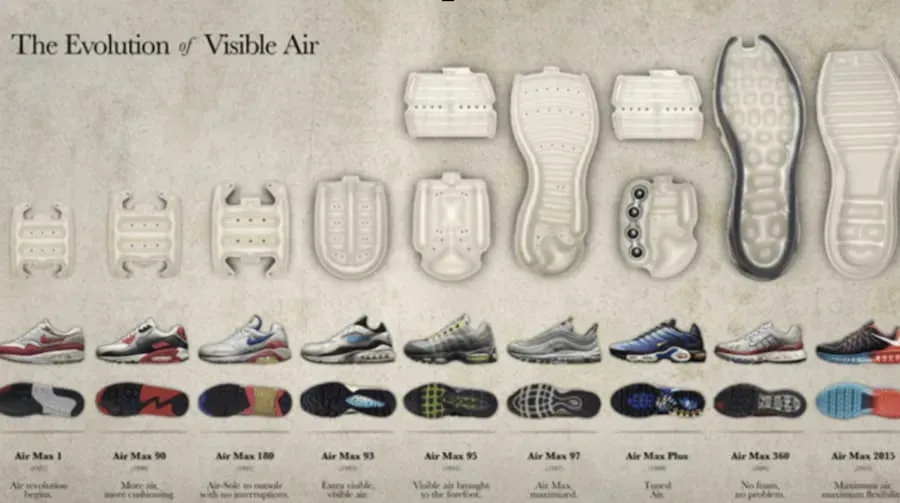
Athletic footwear companies such as Nike and Reebok have been on a “never-ending quest” to create the lightest, fastest, and strongest shoe possible. Designed for Olympic athletes, these new shoes can actually shave off seconds from a runner’s time.
One of Nike’s latest models had such an unfair advantage that the Tokyo Olympics banned the shoe.
The fierce competition between athletic shoe companies to build higher performance sneakers has caused the designs to be lighter and much more buoyant than past shoes, explaining why the shoes are found floating.
Give My Dog The Bone
A local named Mike John and his dog spotted one of these as they walked on the southern coast of Vancouver Island.
What he saw was a fibula and tibia attached to a left foot, all of it encased in a white sock and black Velcro shoe. “By the looks of it, the foot was totally intact. The ankle bone still worked and the bones were attached at the base of the knee,” Johns told CTV News.
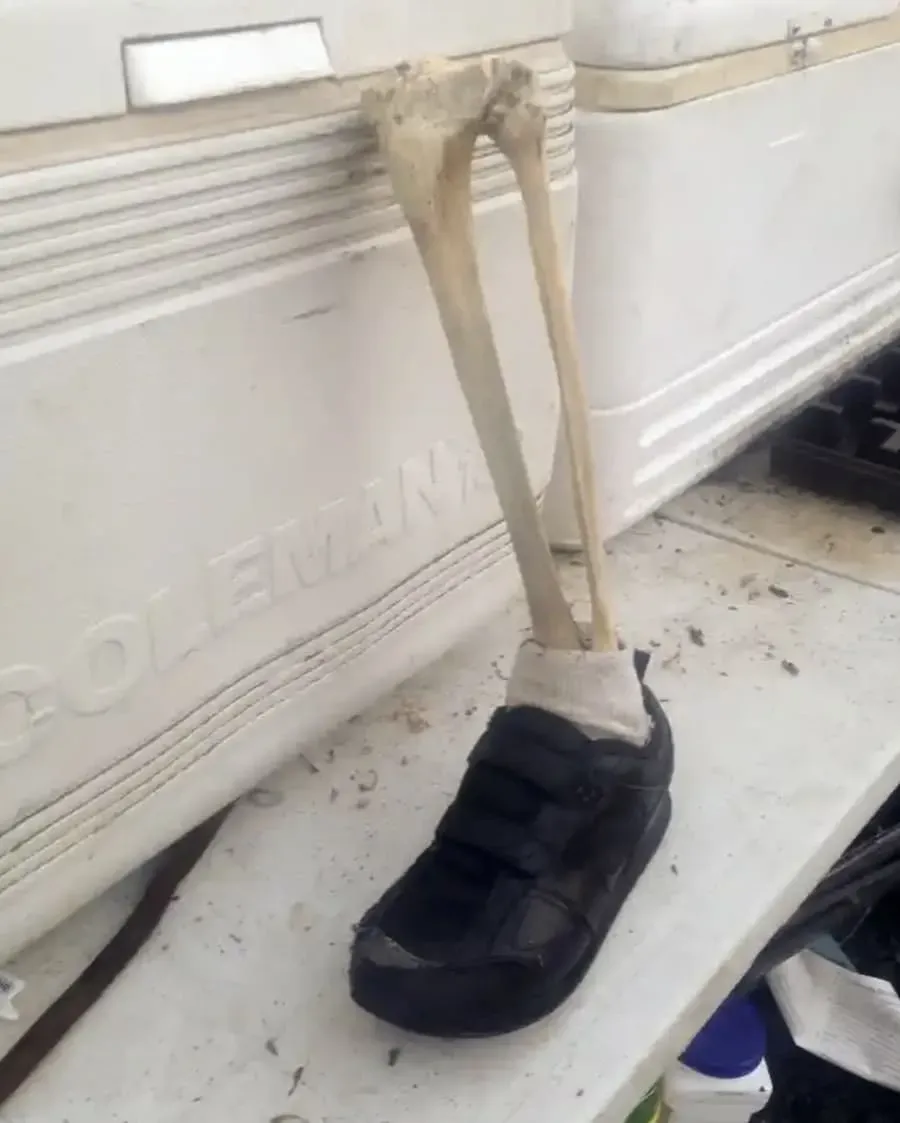
Why The Salish Sea?
This question was answered by Parker MacCready, a professor of oceanography at the University of Washington in Seattle. MacCready built a simulation called LiveOcean, used to simulate the traveling paths of oil spills.
Authorities asked Parker to run LiveOcean to map the trajectory of the washed up feet from the Salish Sea. His simulation concluded that the winds around this area are “westerlies” and bring objects towards the shore instead of pushing them out into the ocean.
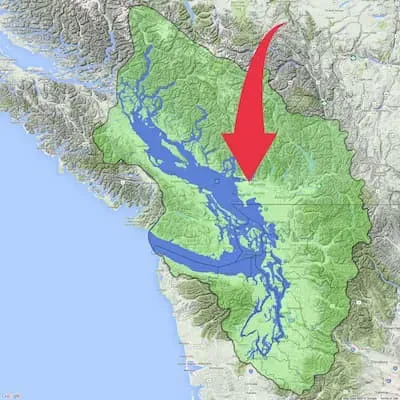
With these winds combined with the topographical layout of the Salish Sea, it is quite easy to see why the feet end up where they do.





